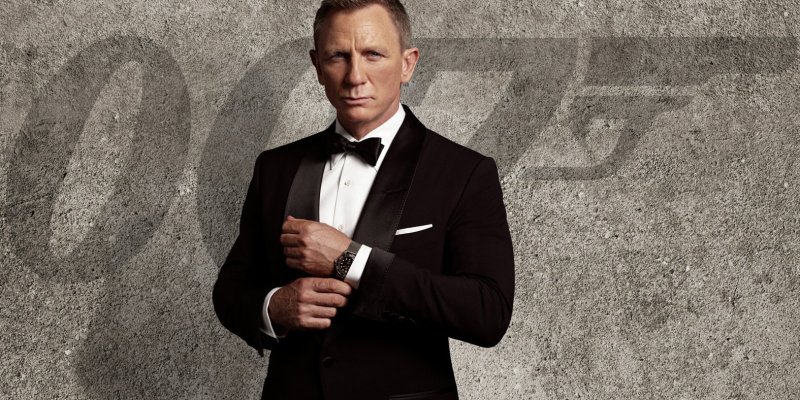This discussion of James Bond continuity contains spoilers for all of the Daniel Craig films, including No Time to Die.
When Daniel Craig first graced the big screen as James Bond in Casino Royale, he did not do it like every actor before him since Dr. No: a brisk walk across the screen being tracked by the barrel of a gun before a quick turn to shoot. While the gun barrel sequence appeared, it was part of a rough-and-tumble fight sequence during the mission where Bond earns his 00 status. The decision was a bold statement from Eon Productions, the company behind nearly every Bond film ever made, saying that this was a new Bond doing new things. While we, the audience, didn’t know it at the time, one of those new things was something James Bond had only ever lightly dabbled in: continuity.
Historically, continuity in James Bond films has been incredibly loose, to say the least. It is, however, unfair to say that Daniel Craig was the only James Bond to feature continuity. We can infer from lines, characters, and references in the first seven Bond films that the character was supposed to be the same one and his adventures were happening chronologically. Still, Craig’s time as Bond has been drastically different. Through his five films, which stretch across 15 years, we have seen Bond go from a “blunt instrument” to the refined spy that the franchise was built on. This is resoundingly the same character. The death of his first love, Vesper Lynd, in Casino Royale plays a major role in four of his five outings and reverberates up until the dramatic and stunning conclusion of No Time to Die. The Craig films have not only attempted to create a whole character out of Bond but also build a five-film story arc that brings Bond from a beginning to an end. That continuity is both a saving grace and a lead anchor for No Time to Die.
No Time to Plan
What is completely and totally obvious now is that this particular continuity was not planned from the start. Hell, it might not have even been dreamt up before Spectre, which clearly shows in No Time to Die. There are a variety of reasons why this is. To begin, Casino Royale was released in 2006. That’s before Iron Man, before cinematic universes, and before streaming took TV from episodic to narrative in a big way. At the time, if you were making interconnected films, a trilogy was the most likely shot, and Bond had never even attempted two tightly connected films in a row. Things have obviously changed since then, and Eon is nothing but adaptable to the biggest trends. Why do you think Bond has survived so long?
There was a clear throughline on Daniel Craig’s first film that set up Quantum as an evil organization that he was going to take down as he matured into the James Bond we’d known since Connery. The death and betrayal of Vesper would drive him into the womanizing superspy we know, with a dash of the complicated character Ian Fleming wrote about in his books. However, three things happened that completely broke this plan and left No Time to Die with a mess of continuity to clean up.
The first is the rise of continuity and cinematic universes in cinema and pop culture in general. Nerdom has grown, and like it or not, continuity matters to people a lot more than it did. The rise of the Marvel Cinematic Universe and the fervor over even minute contradictions in cinematic and television universes shows this. We, as a society, care a lot about continuity now.

The second is Quantum of Solace. The film came out in 2008 amidst a writers strike in Hollywood. This led to its literally being written on set by the director, the producers, and Daniel Craig, eventually ending up with Craig’s worst outing and delivering a Bond film that’s pretty much a mess from start to finish (bar a great scene at the opera). The movie was supposed to carry Bond from the grieving, violent mess he was into his new character while expanding the idea of Quantum into a global cabal of evil supervillains, but the entire thing falls apart. Quantum‘s failure triggered Eon to rethink its approach, and the outcome is Skyfall, possibly the best Bond film ever. The issue is that Eon used Skyfall as a full reset. Bond dies in the beginning, there’s no mention of Vesper, and the movie routinely points out that “sometimes the old ways are the best.” The message was clear: Bond is back to his old ways, and we were all very much there for that.
Then the third thing happened. After decades of legal wrangling Eon got the rights to once again use Spectre, the evil global organization from the original Bond films that Quantum was so obviously trying to duplicate, and Bond’s nemesis Blofeld. The end result was Spectre, a movie that attempts to bring back all the continuity Skyfall either shrugged off or tied up and then add extra layers on top of it. In this film, we not only have a retelling of Bond falling in love from On Her Majesty’s Secret Service but also discover that Blofeld is Bond’s de facto half-brother and that everything that has happened to him in the last three films was his doing. It is a bull rush of continuity that clearly was not planned at all from the get-go and fundamentally misses a lot of what makes Bond so much fun to watch. Basically, one film after telling us Bond was back to being Bond, Eon slammed in as much continuity as it could.

Continuity Is Forever
And so No Time to Die is saddled with a mess of continuity. No Time to Die‘s first struggle is overcoming the fact that the story had been reset in Skyfall and then poorly pieced back together in Spectre. In order to do this, however, the filmmakers decide to blow it all up again, combining a plot that stands alone with a continuity that doesn’t fit it. The first half of the film, while a fantastic bit of Bondian adventure, is basically set up to wipe out Spectre and Blofeld so the new plot and villain can take over.
Now, people hated Blofeld’s sibling status with Bond in the prior film, and maybe this is why they felt the need to move away from the character. But it just highlights even more the lack of planning put into the overarching story. These bumps in the narrative aren’t limited to that. We haven’t seen Felix Leiter since Quantum of Solace, but his death is slammed into No Time to Die as a powerful moment. It wasn’t earned. Meanwhile, M, who spent Spectre taking the high road against the ends justifying the means, does a complete 180 and is the head of a program that could easily be called “The Secret Weapon Where the Ends Justify the Means.” Bond and Swann’s romance also seems horribly rushed. The film’s continuity is tattered and torn by moments like this.
However, No Time to Die, for all its faults in plotted continuity, is not a failure.

The key factor in this is Bond. While the overall plotting of Daniel Craig’s films falls apart the moment you breathe on it, his James Bond does not. No Time to Die finds its continuity footing through the character journey of Craig’s Bond and by making incredibly bold decisions for a franchise that is built on tradition.
Through the five films, even with Skyfall‘s reset, we see a James Bond aging with regret, becoming a one-liner super-spy, and, in No Time to Die, realizing that he’ll never be able to leave his dark self behind to live a “normal” life. Grounded in Craig’s performance, the throughline leads to the shocking conclusion of Bond actually dying at the end of the film. Eon might not have had a full plan when it started — and it definitely didn’t nail Bond’s story arc perfectly — but No Time to Die still sticks a landing with surprising power.
A second aspect that contributes to the success of No Time to Die is a bit more ethereal, but it has to do with redefining James Bond, the nostalgia around him, and the more than 50 years of franchise history. Craig’s first two Bond films truly turned their back on nostalgia. Casino Royale encapsulates this when Bond is asked if he’d like his martini shaken or stirred, and he replies, “Do I look like I give a damn?” However, with Skyfall the films began paying homage to Bond’s history, culminating in No Time to Die, which is probably the most referential to Bond before Craig of any other film.
This is partly because the movie is a spin on On Her Majesty’s Secret Service, picking up plot points and character developments from the most human Bond film made before the Craig era. The film includes multiple visual references to that movie, lifts heavily from its score, and even concludes with Louis Armstrong’s “We Have All the Time in the World,” which was written for OHMSS. It is also littered with other little nods to previous Bonds, not just for fan service but seemingly to give a sense of continuity to the entire Bond oeuvre. This isn’t just a conclusion to Craig’s time as Bond, but to Bond as we knew him.

You Only Die Once
It is this James Bond continuity — the bigger picture one, the one that weighs more on the franchise than the contradictory plotlines and quickly tied-up villains — that makes No Time to Die succeed. It allows the filmmakers to make the big, bold decision of not only giving Bond a daughter but killing him off at the end of the film. Giving the film this kind of continuity heightens the weight of those moments and reaffirms the fact that Bond, no matter who is playing him, really does destroy almost everything he touches, even if he does end up saving the world. In this context, Leiter’s death does have punch. In this context, Spectre’s downfall doesn’t seem so abrupt. In this context, Skyfall‘s reset is a far smaller blip in the grand scheme of things and can even be seen simply as a jump in time to get Bond back on track after his many adventures.
As a film, in and of itself, No Time to Die is a continuity mess, clearly made to conclude a series that didn’t have a fully constructed plan at the start. However, as a conclusion to James Bond as we know him, it is a success without a doubt. Craig’s tenure as Bond has been overwhelmed with the idea that it needs to prove that Bond is still worthy of existing, and it has. However, the Bond of the future may not be the Bond we know so well as No Time to Die seems to have closed that door. Bond is, of course, coming back, but he (she?) will be different. Craig’s tenure as Bond may not have started as Bond usually does, but it ended just the same as every film has, with four words: James Bond will return.
